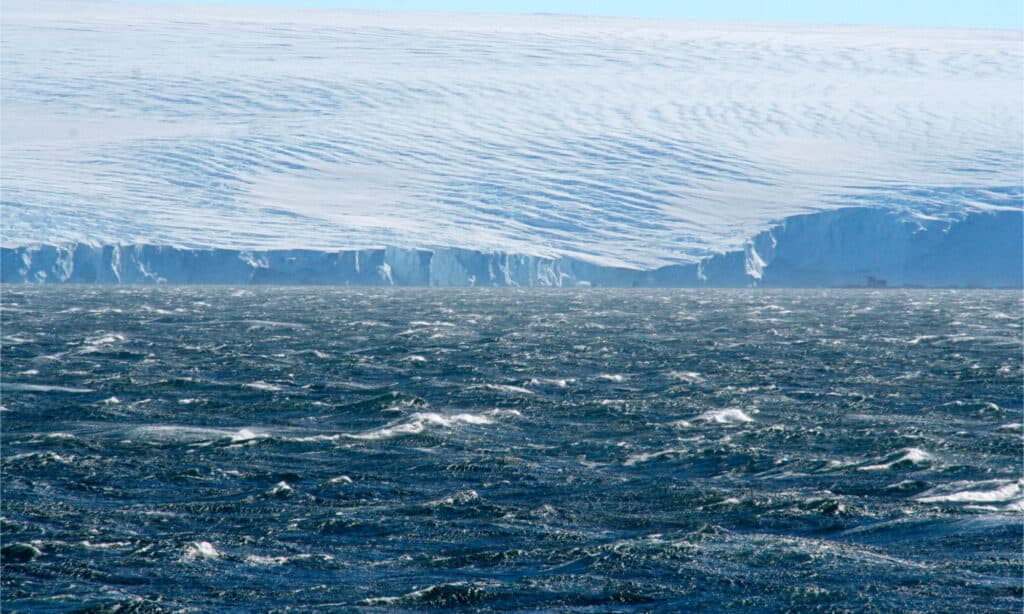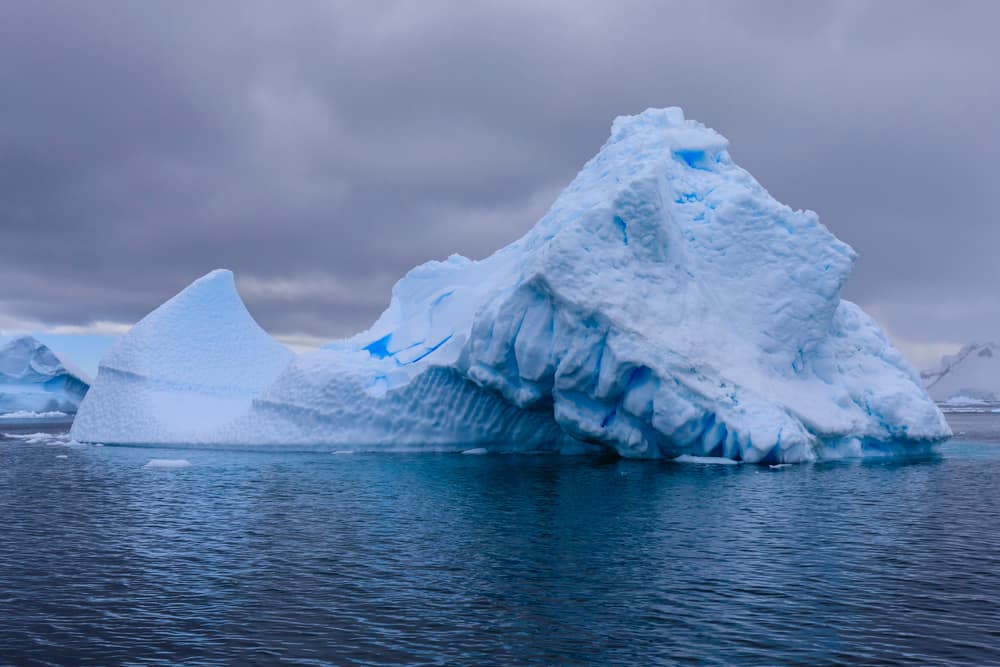Sailing is an important part of our history. Silks and spices from China made their way to Europe via the maritime ‘Silk Road’, while colonial explorers discovered North America in the late 1400s. Unfortunately, not all ships were successful in meeting their ports. Legends of sailors, famous shipwrecks, and survival have also become important history.
Some of the most famous shipwrecks originate from explorers. Much of the sea was a mystery, and weather conditions were unknown. For many early sailors, undertaking a voyage was a leap of faith. Explorers would sail for years, documenting new islands they discovered. While some returned from their voyages with information and new knowledge, many never returned.
Last explored were the waters of the Antarctic. Frigid, isolated, and surrounded by ice, the task of documenting the harsh landscapes was daunting. The Drake Passage, a waterway between Cape Horn, Chile, Argentina, and the Antarctic Shetland Islands, has earned a treacherous reputation. The combination of currents and unpredictable weather make this passage one of the most dangerous for any ship to sail. The Drake Passage holds at least 800 shipwrecks from the first documented sailing in the 1500s.
The San Telmo: Famous First Shipwreck

The seas of the Antarctic are notoriously rough and dangerous.
©ENVIROSENSE/Shutterstock.com
The San Telmo sank south of Cape Horn in September 1819, with no known survivors of the 644 passengers who were on board. The ship, directed by Captain Joaquin de Toledo y Parra, was a Spanish naval flagship assigned to Rosendo Porlier y Asteguieta. While voyaging to Peru to support colonial forces, the San Telmo received damage from a storm while sailing the Drake Passage. The ship sank without a trace.
William Smith discovered fragments of the ship on Livingston Island several months after its disappearance. Smith was on an expedition of his own and officially discovered Livingston Islands. Smith’s discovery led to the theory that the surviving crew from the San Telmo may have been the first to reach the shores. The shipwreck is famous as it may be the first recorded death of explorers in the Arctic.
The ship was a 74-gun wood, copper, and multi-sail boat that entered into service in 1788. It measured 170 feet long and weighed approximately 1,640 tons when sinking.
In 2019, the Antarctic Treaty recognized the remnants of the San Telmo as historically significant, protecting the wreck from further exploration without stringent regulation. Several artifacts as well as remains of the ship’s hull have been studied.
Champion of the Seas: Shipwrecked Transporting Goods

Despite the challenges faced, sailing the Antarctic provided important passageways for travelers and goods.
©Eleanor Scriven/Shutterstock.com
Unlike the previous exploration ships, the Champion of the Seas was a passenger service ship. Champion of the Seas had port destinations in Liverpool, England, and Melbourne, Australia. During its service, the ship recorded the fastest travel in a single day, covering 465 nautical miles between the 10-11th of December 1854. The record would remain unbroken for the next 129 years.
After setting the record for speed, Champion of the Seas sailed for the next 20 years, undertaking various services. The British government chartered the ship to carry troops to Calcutta in 1857. After military service, Champion of the Sea entered the shipping trade in 1868. In 1877, the ship began taking on water near Cape Horn while sailing to Ireland. The 259-foot boat sank into the waters of the Antarctic. All crew members survived. The shipwreck lies under the sea near the Gantock Rocks.
Antarctic: Lost Exploration

The Falkland Islands, the destination of the Antarctic, are home to King Penguins.
©Farjana.rahman/Shutterstock.com
The Antarctic was on an exploratory expedition through the Arctic regions. After discovering Hope Bay on January 15, 1902, the ship camped on Snow Hill Island. When the weather improved enough, the Antarctic continued its exploration mission, sailing for the Falkland Islands. On November 5, the ship left the Falkland Islands to replenish supplies, traveling the Ushuaia to the Antarctic Peninsula.
During this return trip, the ship became trapped in ice near Hope Bay. The Antarctic managed to break through this ice trap, only to become trapped by another. The ice damaged the ship and it began to fill with water.
Captain Larsen attempted to ground the ship on Paulet Island, but the ship sank on February 12, 1903. Remarkably, all the crew members survived the following nine months in the Arctic and were rescued by the Argentine boat Uruguay in November. The surviving crew members had reached shore and built huts for shelter. They captured fish and local wildlife for survival, consumed penguin eggs, and burned blubber for heat. Johan Andersson, Swedish archeologist, paleontologist, and geologist on board, later published Antarctic: Proud She Lived, and Proud She Died about the experience, making the Antarctic one of the most famous shipwrecks of its time. The Antarctic was a Swedish-built ship, equipped with a steam engine and three masts. Measuring 136 feet long, the ship had a top speed of six knots.
The Endurance: The Most Famous Shipwreck in the Arctic

Pack ice is the term for floating chunks of ice. Carried by the currents and wind, these ice formations gather together in the water. As they are large and heavy, they can cause great damage to ships. Modern sailing employs the use of specialized ships, called icebreakers, who forge ahead and break passageways.
©Kertu/Shutterstock.com
The most famous shipwreck in the Antarctic, the Endurance was an exploration ship. Sir Ernest Shackleton, along with 27 crew members, embarked on the Imperial Trans-Antarctic Expedition. Shackleton planned for the trip to be from 1914-1917, however, the Endurance sunk early in the trip. Shackleton, born in Ireland, had already set records for reaching the farthest Northern and Southern poles in the Arctic. He also climbed Mount Erebus with his crew in 1908, becoming the first to reach the geographic south pole.
He planned the Imperial Trans-Antarctic Expedition route to cross the Arctic from pole to pole. However, off the Caird coast, floating pack ice crippled the Endurance. The ship floated for 10 months at sea, unable to break through the ice. The effects of the pack ice colliding with the boat through months of storms were too great. The Endurance first began to lean to one side, then fully sank under the ice as it filled with water through numerous leaks in November of 1914.
The Crew’s Remarkable Survival
Shackleton and his crew managed to pull supplies off the boat before it was lost. The crew remained on the ice before taking the Endurance’s small boats and sailing to Elephant Island in April 1915. Once on the shores, Shackleton decided that the island was too remote for rescue, and set out with several crew members to find aid. Though it took four different return expeditions before he was successful, all of the remaining crew were rescued from Elephant Island 128 days later. The saga of the Endurance, as well as Shackleton’s dedication to saving the lives of his crew, made the Endurance one of the most famous shipwreck stories of the century.
The Endurance’s sinking was also remarkable as photo and video equipment were on board the ship during the expedition. Intended to document the expedition, instead, the equipment documented the sinking and survival measures of the crew. Expedition members who were left behind on Elephant Island took care to preserve and protect these documents.
The remnants of the Endurance were discovered in March of 2022. The site has been designated as protected due to its historical significance, and exploration or removal of artifacts from the site is prohibited.
The photo featured at the top of this post is © timsimages.uk/Shutterstock.com
Thank you for reading! Have some feedback for us? Contact the AZ Animals editorial team.






